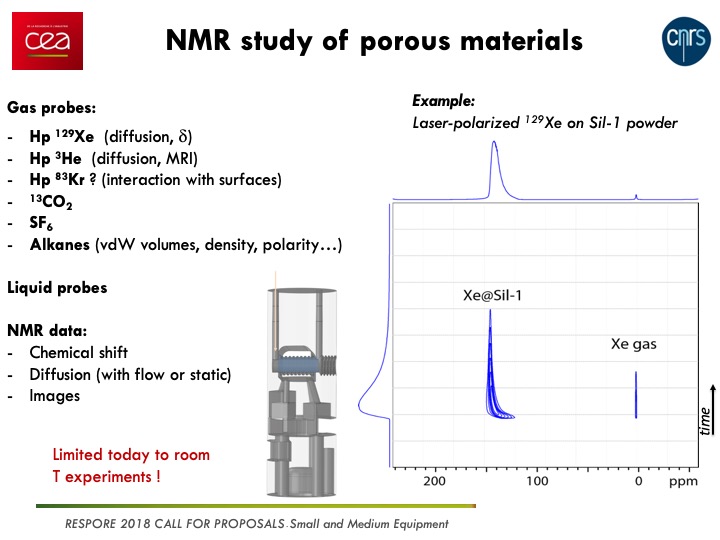Development of an optimized tool for the preparation and analysis of porous materials via enhanced NMR
Equipment, AAP 2018-4
Project leader: Patrick Berthault
Abstract:
The objective of the project is to propose a powerful and versatile tool for the structural analysis of porous materials, using fluidics (gases and liquids) and micro-NMR detection. It will take profit of recent instrumental developments based on the conception of low-cost 3D-printed inserts. These inserts are designed to be plugged on a micro-imaging probehead and electrically connected to its tuning circuit. In this setup the micro-solenoid is placed as closely as possible to the material to be studied. The inlet pipe is connected to a syringe pump placed on top of the NMR magnet, which enables a controlled delivery of gases or liquids in the circuit. This setup presents several advantages with respect to the classical ones, such as optimized filling factor and high versatility, as all nuclei can be studied simply by changing the capacitor values.
However today such experiments cannot be performed at higher temperature or with liquids more corrosive than water, which seriously limits the range of studies accessible. Therefore, we will develop the same principle of inserts, but in 3D-printed ceramics or glasses. Indeed, some recent publications have given clues to build such inserts using stereolithography. In this technique, the ceramic or silica particles are embedded within the photosensitive resin. After subsequent cleaning of the so-called green parts, the polymer is removed by heating under oxidative atmosphere (debinding), leading to brittle and porous pieces which are then hardened and densified by vacuum sintering. During this process, the pieces exhibit a pronounced shrinkage due to the removal of the polymeric scaffold. However, this shrinkage has been shown to be isotropic, which allows one to retain the fine details created during the printing. Such a process will permit to improve our inserts for high temperature and harsh environment compatibility.

Themes:
Collaborations: